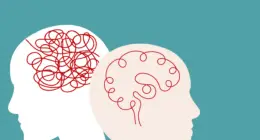Endorphins are responsible for providing a feeling of euphoria, while dopamine is responsible for motivation and rewards. While both hormones play an important role in our mental wellbeing, it is important to understand how they work together to keep us feeling happy and motivated
What are endorphins?
Endorphins are natural chemicals produced by the body that function as neurotransmitters in the brain. They are known for their pain-relieving effects and are often referred to as the body’s natural painkillers. Endorphins are also associated with feelings of pleasure and euphoria.
Endorphins are produced by the pituitary gland and the hypothalamus in response to various stimuli, including exercise, stress, pain, and other forms of physical or emotional stress. Endorphins bind to the same receptors in the brain as opioids, such as morphine, and produce similar effects, such as reducing pain and inducing feelings of pleasure and well-being.
Endorphins play a role in regulating various physiological processes in the body, including stress response, immune function, and mood. They are also believed to play a role in addiction and are involved in the reinforcing effects of drugs of abuse.
Activities that can stimulate the release of endorphins include exercise, laughter, meditation, acupuncture, massage, and certain foods. Endorphins can provide a natural way to manage pain and improve mood, and are often considered a natural alternative to pharmaceutical painkillers.
What are dopamine?
Dopamine is a neurotransmitter that plays a role in the brain’s reward system. It is released when we do something that feels good, such as eating delicious food or having sex. This release of dopamine reinforces our behavior, making us want to repeat the pleasurable activity.
Dopamine also plays a role in focus and motivation. When we are working on a task and need to focus, dopamine helps us by making us feel more alert and motivated. For instance, if you’re studying for an exam and need to stay up late to cram, it’s likely dopamine that’s keeping you going.
While endorphins are associated with pain relief, dopamine is more often linked with pleasure. However, both neurotransmitters play important roles in our brain and can affect our moods in different ways.
Endorphins and Dopamine – Key differences
Endorphins and dopamine are both neurotransmitters produced in the brain that play important roles in regulating mood and behavior. However, there are several key differences between these two chemicals:
Functions: Endorphins are primarily involved in reducing pain and inducing feelings of pleasure and well-being, while dopamine is involved in reward and motivation, learning and memory, attention, and movement.
Release: Endorphins are released in response to stress, pain, exercise, and other forms of physical or emotional stress, while dopamine is released in response to rewarding stimuli, such as food, sex, drugs, and social interactions.
Receptors: Endorphins bind to opioid receptors in the brain, while dopamine binds to dopamine receptors.
Effects: Endorphins produce a general sense of well-being and relaxation, while dopamine produces feelings of pleasure, satisfaction, and motivation.
Addiction: Endorphins are not considered addictive, while dopamine is closely linked to addiction and is involved in the reinforcing effects of drugs of abuse.
While endorphins and dopamine are both important neurotransmitters that play important roles in regulating mood and behavior, they have different functions, release mechanisms, receptor targets, and effects.
How endorphins affect the brain
Endorphins are naturally occurring chemicals in the brain that act as neurotransmitters, meaning that they transmit signals between neurons in the brain. Endorphins primarily bind to opioid receptors in the brain, which are involved in pain relief and the regulation of mood.
When endorphins are released in the brain, they bind to these receptors and inhibit the transmission of pain signals, leading to a reduction in pain sensation. Endorphins also produce feelings of pleasure and well-being, which can help to counteract negative emotions and improve mood.
In addition to their pain-relieving and mood-enhancing effects, endorphins can also have other physiological effects on the body, such as reducing inflammation and boosting the immune system.
The release of endorphins is often associated with various activities that produce feelings of pleasure or well-being, such as exercise, sex, laughter, and meditation. These activities can stimulate the production and release of endorphins in the brain, leading to a general sense of well-being and relaxation.
However, it is important to note that endorphins are not a cure-all for mental or physical health problems, and their effects may be temporary. For individuals experiencing chronic pain, depression, or other mental health issues, professional medical treatment may be necessary.
How dopamine affect the brain
Dopamine is a neurotransmitter that is involved in a wide range of brain functions, including movement, motivation, reward, attention, learning, and memory.
When dopamine is released in the brain, it binds to dopamine receptors, which are located on the surface of neurons. This binding activates signaling pathways in the brain that can lead to a range of effects, including:
Motivation and reward: Dopamine is involved in the brain’s reward system, which is responsible for motivating behavior and reinforcing positive experiences. When we experience something pleasurable, such as eating a delicious meal or winning a game, dopamine is released in the brain, which reinforces the behavior and motivates us to repeat it.
Movement: Dopamine is also involved in the control of movement. When dopamine levels are low, as in the case of Parkinson’s disease, movement can become slow and rigid.
Attention and learning: Dopamine plays an important role in attention and learning. It helps to focus our attention on important tasks and to remember important information.
Mood: Dopamine is also involved in regulating mood. Low levels of dopamine have been associated with depression, while high levels of dopamine have been associated with mania.
Dopamine can be released in response to a variety of stimuli, including drugs of abuse, such as cocaine and amphetamines, as well as natural rewards, such as food and sex. However, excessive dopamine release, as can occur with drug addiction, can lead to long-term changes in the brain that can disrupt normal brain function and lead to addiction.
What are the 4 happy hormones?
(Photo by Shaurya Sagar on Unsplash )

The four happy hormones are endorphins, dopamine, oxytocin, and serotonin. Each of these hormones plays a role in making us feel happy and can be released in response to different stimuli.
Endorphins are released in response to pain or stress and produce a feeling of euphoria. Dopamine is released when we accomplish something or receive a reward and produces a feeling of satisfaction. Oxytocin is sometimes called the “cuddle hormone” because it is released when we hug or kiss someone and helps us feel bonded to them. Serotonin is involved in mood regulation and can be boosted by activities like exercise or exposure to sunlight.
What is the sad hormone called?
There is no such thing as a “sad hormone.” However, there are hormones that can contribute to feelings of sadness or depression. For example, the hormone cortisol is sometimes referred to as the “stress hormone” because it is released in response to stress. When cortisol levels are too high, it can lead to feelings of anxiety and depression.
What is the love hormone in a woman?
(Photo by Ankush Minda on Unsplash )

The “love hormone” refers to oxytocin, which is a hormone that is produced in the brain and released by the pituitary gland. Oxytocin plays a role in a variety of social and reproductive behaviors, including bonding between romantic partners, maternal behavior, and social attachment.
In women, oxytocin is often referred to as the “love hormone” because it is involved in a variety of social bonding behaviors, including sexual arousal, orgasm, and bonding between romantic partners. Oxytocin is released during physical touch, such as hugging and kissing, and can help to strengthen the emotional bond between romantic partners.
However, it is important to note that oxytocin is not exclusively produced by women, nor is it exclusively involved in romantic relationships. Both men and women produce oxytocin, and it is involved in a variety of social behaviors, including maternal behavior, social attachment, and trust.
Featured Image By – Count Chris on Unsplash








